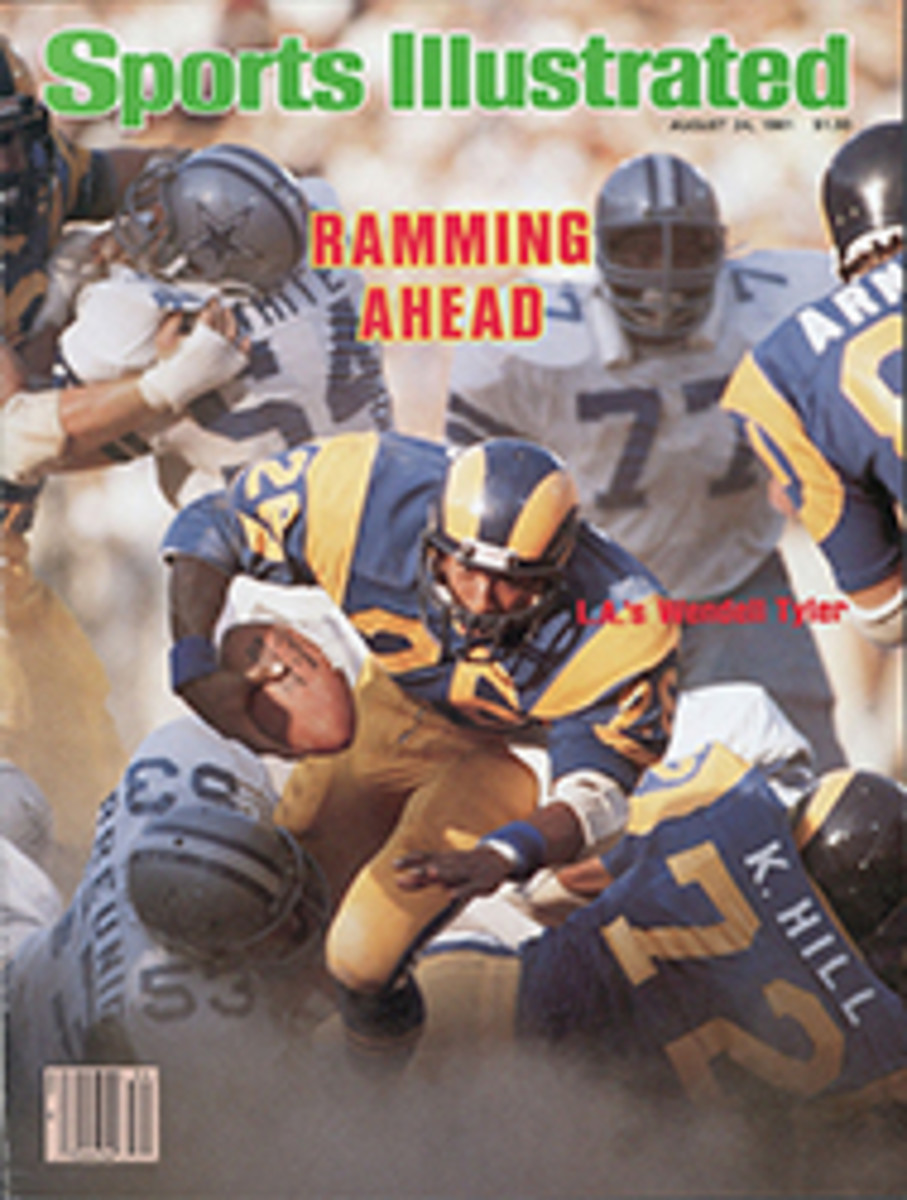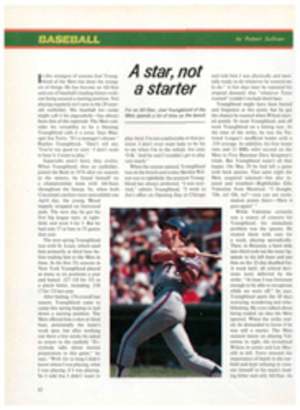
Another Jim Dandy finish
By August of 1930, when one of racing's most esteemed runners, Gallant Fox, walked out onto a muddy track at Saratoga, the Travers stakes had been run 60 times. Gallant Fox, a Triple Crown winner, was the greatest racehorse since Man o' War. The "Fox of Belair," as he was called, entered the Travers with six straight wins as a 3-year-old, and the only horse in the field of four given a chance to beat him was Whichone. On the blackboards marked by bookies' chalk, Gallant Fox was held at 1-2, Whichone at 6-5 and the other two horses, Sun Falcon and Jim Dandy, at 30-1 and 100-1, respectively.
Gallant Fox, of course, lost the 61st Travers to Jim Dandy. He never lost another race and retired with then-world-record earnings of $328,165. Yet from that Travers three adages emerged: 1) Always pick the outsider in a four-horse race; 2) Saratoga is the "Graveyard of Champions"; 3) "Horses for courses." That is, some horses, like Jim Dandy, just run better at certain tracks.
Last Saturday the second-largest crowd in Saratoga's history (39,146) turned out in abysmal weather to see points 2 and 3 driven home once more. After a splendid stretch drive against Wood Memorial, Kentucky Derby and Preakness winner Pleasant Colony, a 24-1 shot named Willow Hour won the 112th running of the mile-and-a-quarter Travers on a sloppy track. Of the 10 starters, only one had ever won at Saratoga: Willow Hour. Twelve days before, in a prep for the Travers, he had defeated three eventual Travers contestants—Belmont Stakes winner Summing, Lemhi Gold and Prince Fortune—at odds of 18-1. The name of that race? The Jim Dandy.
Race fans were particularly interested in this year's Travers because it was Pleasant Colony's first appearance since losing the Belmont to Summing in June. Also, Lord Avie, the pre-Derby favorite, was a Travers starter after missing the Triple Crown races because of an injury. Lord Avie always runs his race, and in the most thrilling of fashions—by coming from far behind. Four of the other starters in the Travers not only had fine stakes credentials but also had come from all over the country: Dorcaro and Lemhi Gold from California; Fairway Phantom from Chicago; Five Star Flight from New Jersey. The rest were improving runners who had bounced around the nation the way squirrels scramble from limb to limb. Each was trying to establish himself as the best 3-year-old in a year in which only one horse, 6-year-old John Henry, could rightfully lay claim to being "Horse of the Year."
The day before the race, each of the trainers said that if the track were fast and his horse lost, he would have no excuses. Shortly after 5 a.m. on race day, however, sheets of rain lashed down and the rain fell all day. Yes, there would be excuses. And Lord Avie, the ultimate third-place finisher, would have the biggest alibi of all.
Jockey Jorge Velasquez, who had been taken off Pleasant Colony after an ill-judged ride in the Belmont and was on Lord Avie in the Travers, rarely gripes about losing a race. When things get hot he merely turns his pillow to the cool side. At the start of the Travers, Velasquez felt pressure on both sides, from Angel Cor-dero Jr. on Pleasant Colony (outside) and Jacinto Vasquez aboard Lemhi Gold (inside). "They liked to have dropped my ass," said a smoldering Velasquez later. "The outside horse came in too much and the inside horse went out too much. They're supposed to be professional race riders. Lord Avie was eliminated right there. I don't know how far I was behind going down the backstretch. Hell, it must have been 25 lengths."
Actually, it was closer to 30. Many in the crowd assumed that Lord Avie, a horse that had never raced on an "off' racetrack, had broken down. With half a mile left to run. Lord Avie was still in last place, some 24 lengths behind the leaders.
At that point Prince Fortune, whom trainer Johnny Campo had entered to serve as a rabbit for Pleasant Colony, was leading, with Willow Hour just behind and Pleasant Colony starting to move up from fifth place. At the head of the stretch, Pleasant Colony joined Willow Hour for the long run to the finish line as Lord Avie circled horses and went into third. Then ensued one of the finest stretch runs in racing history. Willow Hour was on the inside. Pleasant Colony on the outside and both jockeys, Eddie Maple on Willow Hour and Cordero on Pleasant Colony, whipped their horses relentlessly. With a sixteenth of a mile to go it appeared that Pleasant Colony would pass Willow Hour, but he never did. At the finish, Willow Hour remained a resolute head in front of Pleasant Colony, with Lord Avie 1¾ lengths behind.
"Without a bad start," Velasquez said, "I would have won. Maybe I should have believed my 9-year-old daughter, Michele. When she got up she came to see me and told me about a dream she had. 'Daddy,' she said, 'are you riding No. 3 today? I dreamed about the Travers all night and No. 3 kept winning.' "
Lord Avie was No. 9. Willow Hour, who paid $50.20, was No. 3.
Willow Hour is either the ultimate horse for the Saratoga course or a colt who has finally developed into a runner after flashes of promise as a 2-year-old. In 1980 Willow Hour won the Nashua stakes, one of the most important 2-year-old races, only to be disqualified and placed last. "I was suspended for that," said Maple, "but I kept the mount. I always thought he had ability, and he has proved that in his last two races. By winning the Travers he beat the best group of 3-year-olds put together this year."
Exactly what the Travers proved is, at best, enigmatic. Obviously, 1981 is a year in which there is not one outstanding 3-year-old, but several very good ones. Which is best won't be decided until the fall stakes races—if then.
PHOTO
In the stretch whips were flying and Pleasant Colony was trying, but Willow Hour stayed in front.

